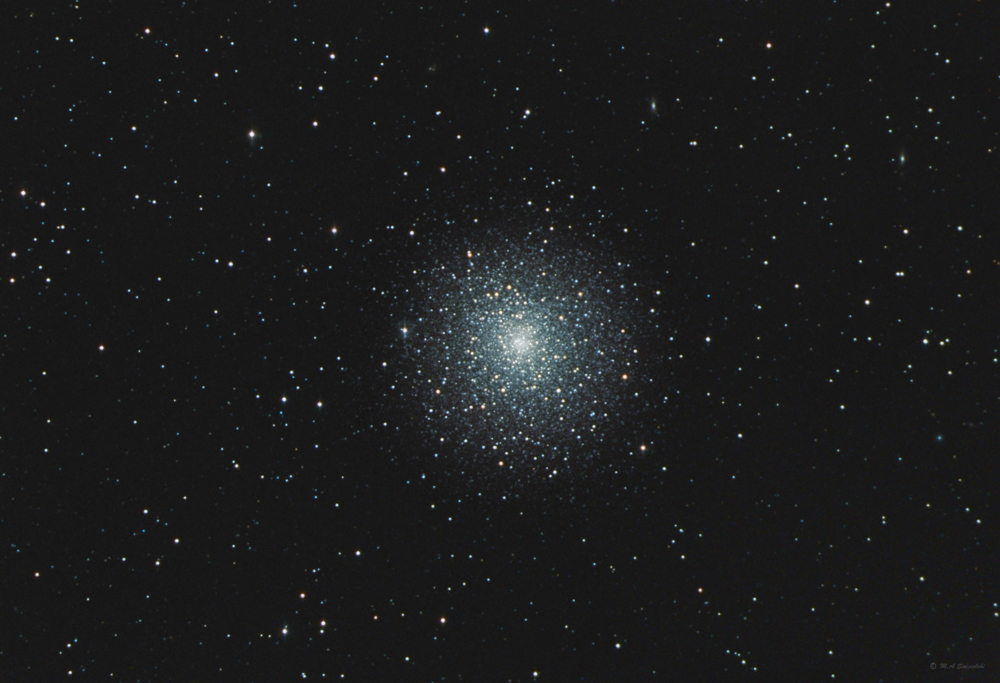
Location & Date
|
Backyard, Abbott Observatory- Long Island, NY, June 2020
|
Telescope
|
TMB130SS F/7 APO, Moonlite focuser, Losmandy G11 Gemini
Image scale 1.54 arcsec/pixel
|
Camera
|
SBIG ST-10XME
Baader L, R,G,B filters
CCD temp -5°C
|
Exposures
|
Lum-15x2m & 6x5m, Red-15x2m & 6x5m, Green-15x2m & 6x5m, Blue-15x2m& 6x5m Bin 1x1
|
Planning & Acquisition
|
Image planning - Sequence Generator Pro
Image acquisition - Sequence Generator Pro w/PinPoint & PHD2 (guiding)
|
Processing
|
CCDStack - calibration, de-bloom, normalize, combine, deconvolution
Adobe CS4 - Image composition, dynamic range blending, Noise reduction, JPEG conversion
This image is a combination of 2 minute sub-frames to prevent the core from saturation and 5 minute sub-frames to bring out the stars on the perimeter.
|